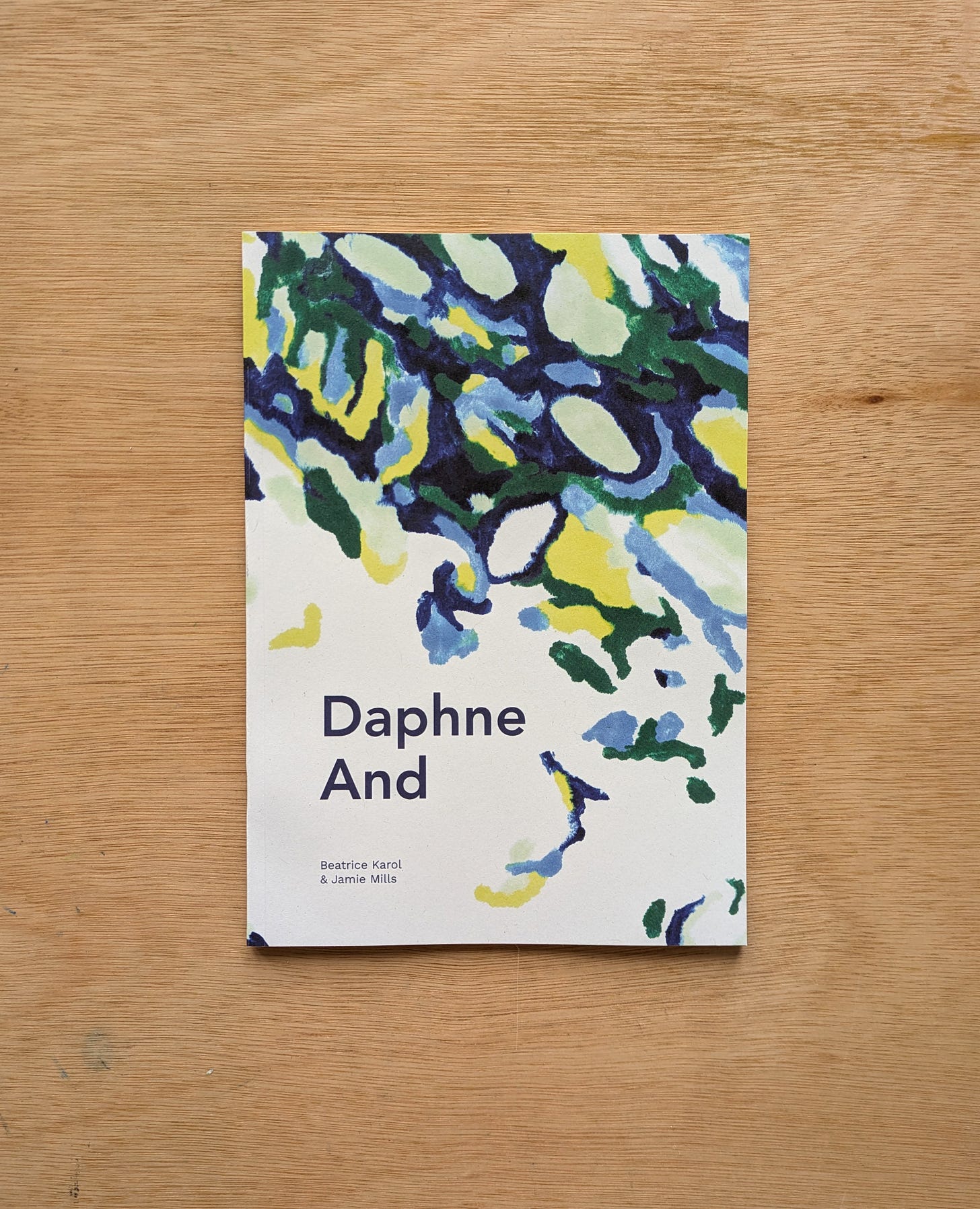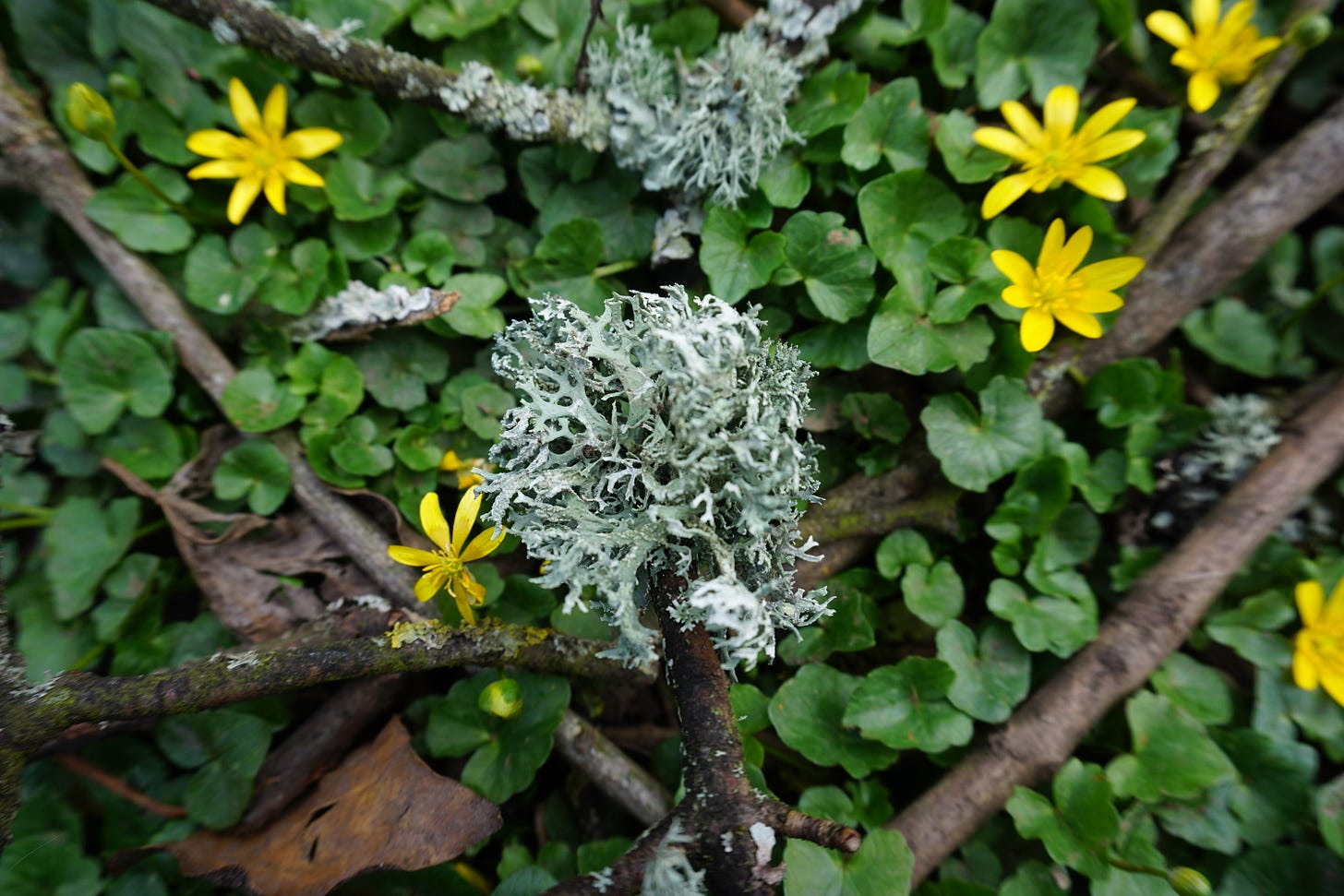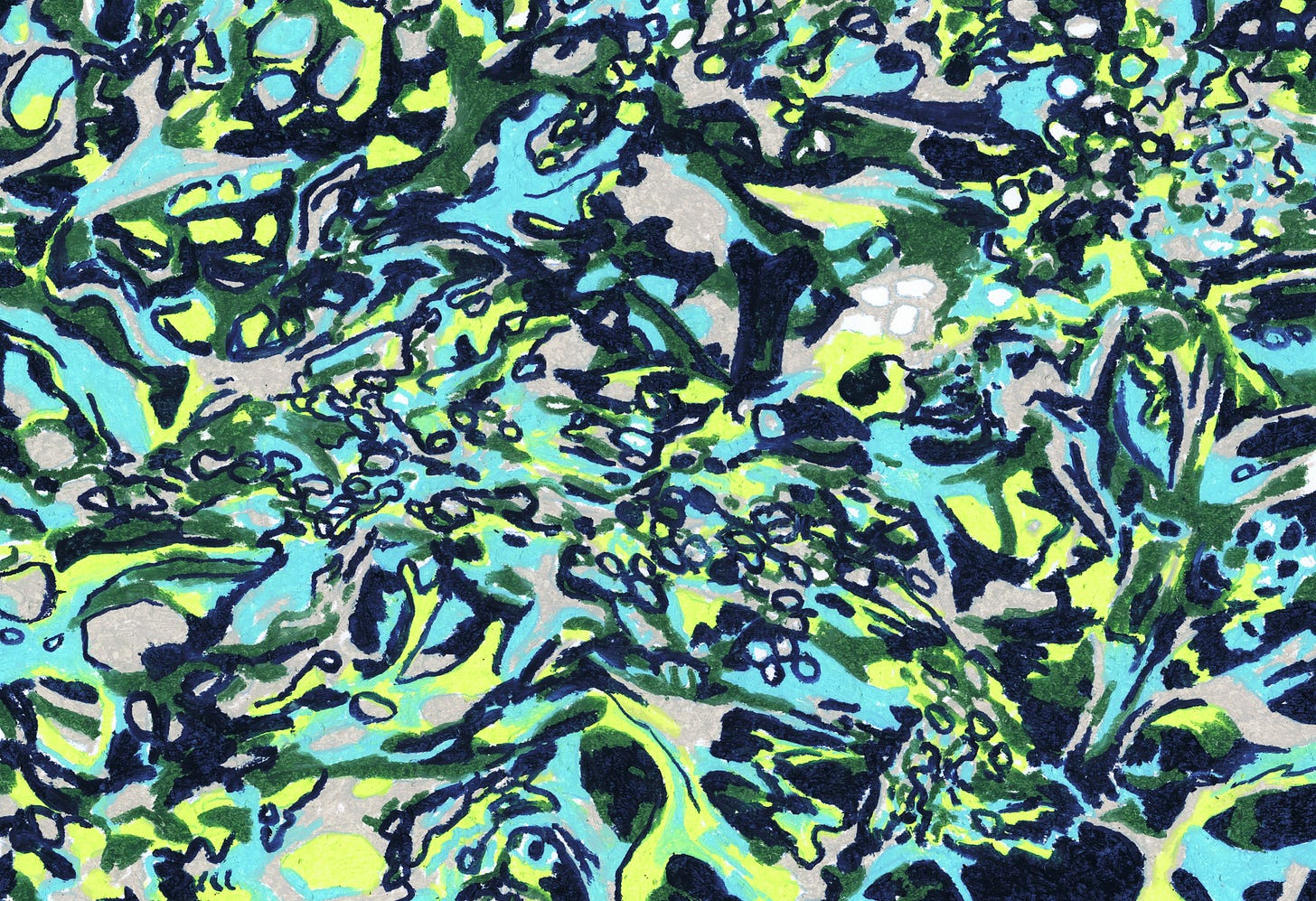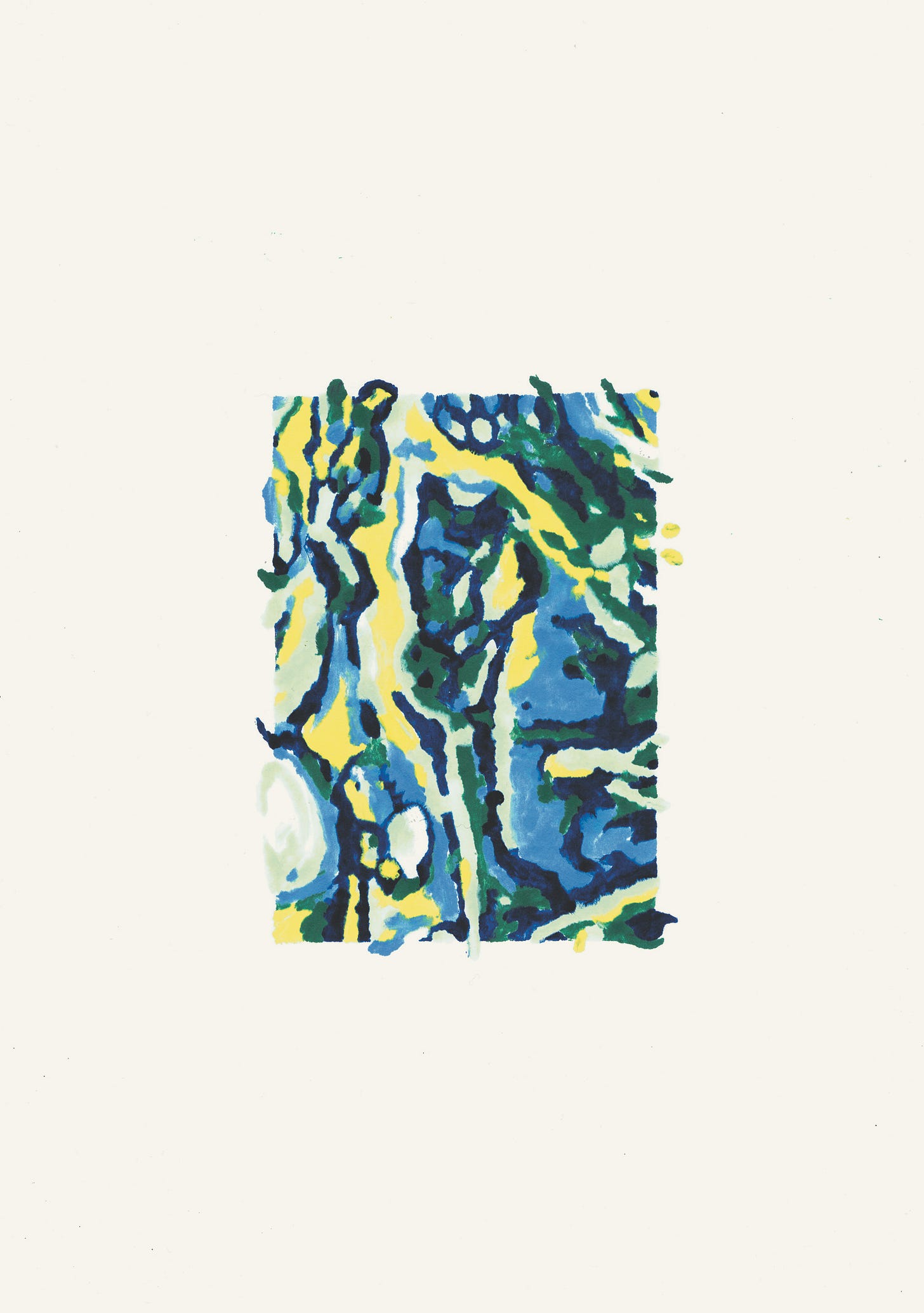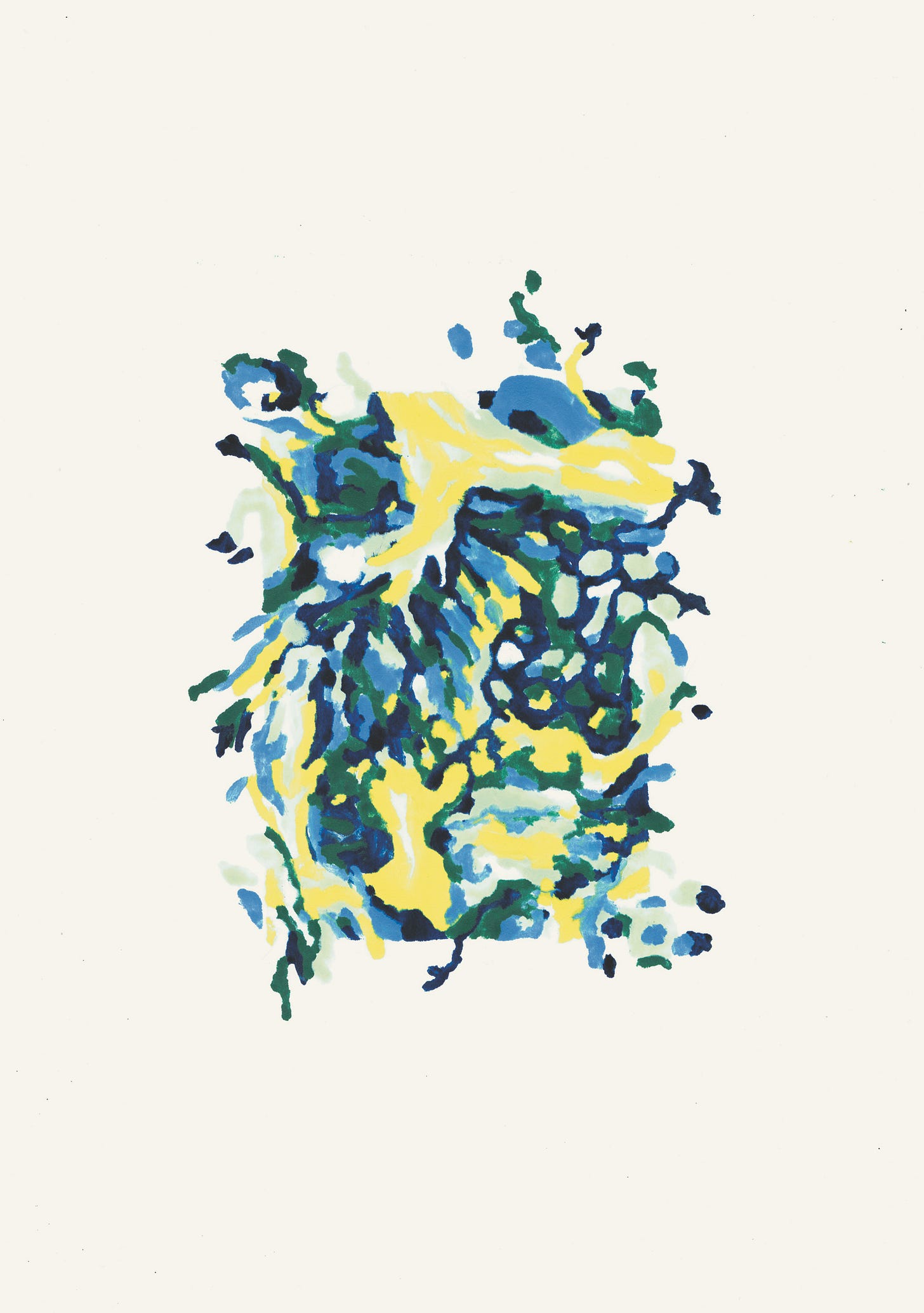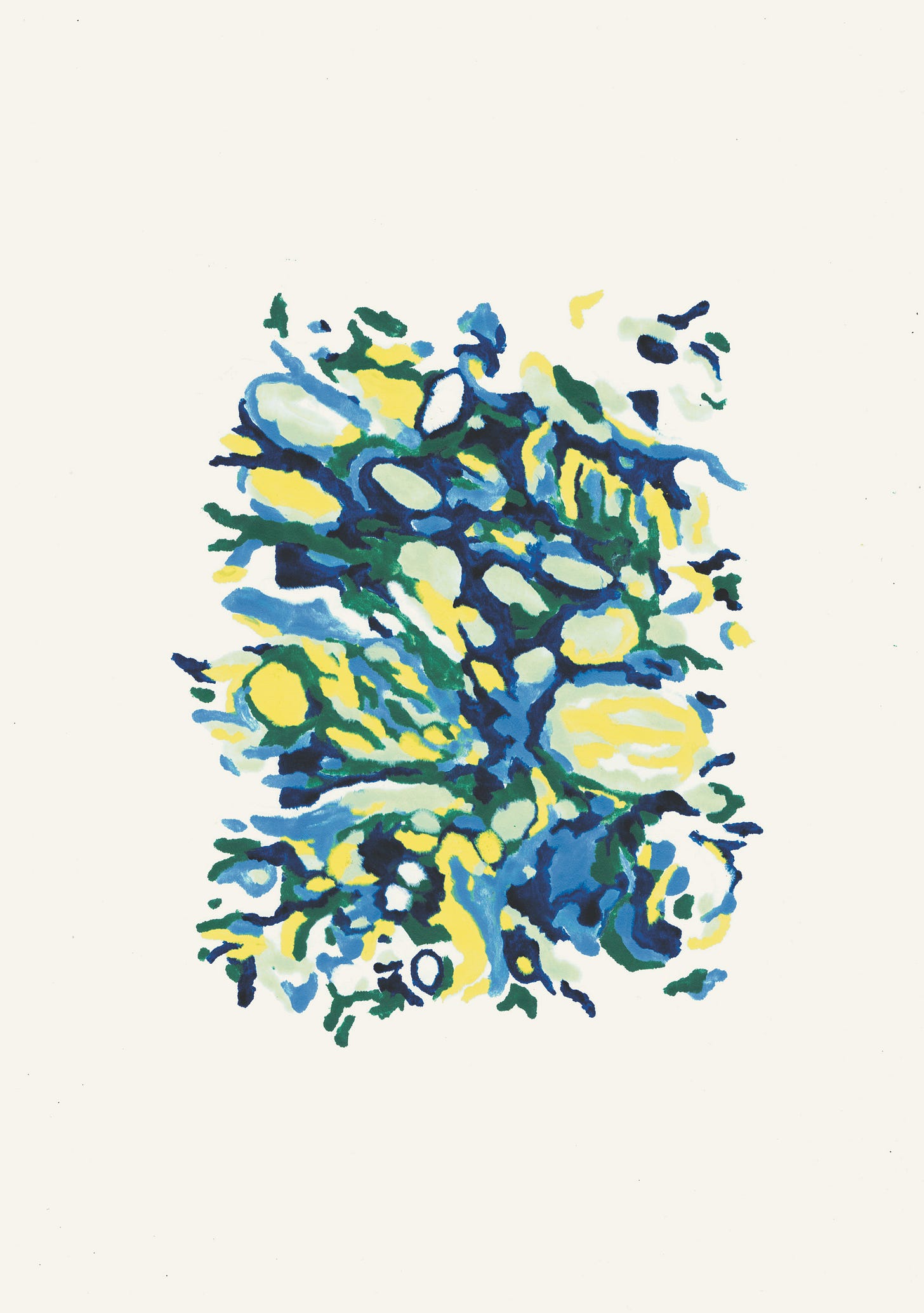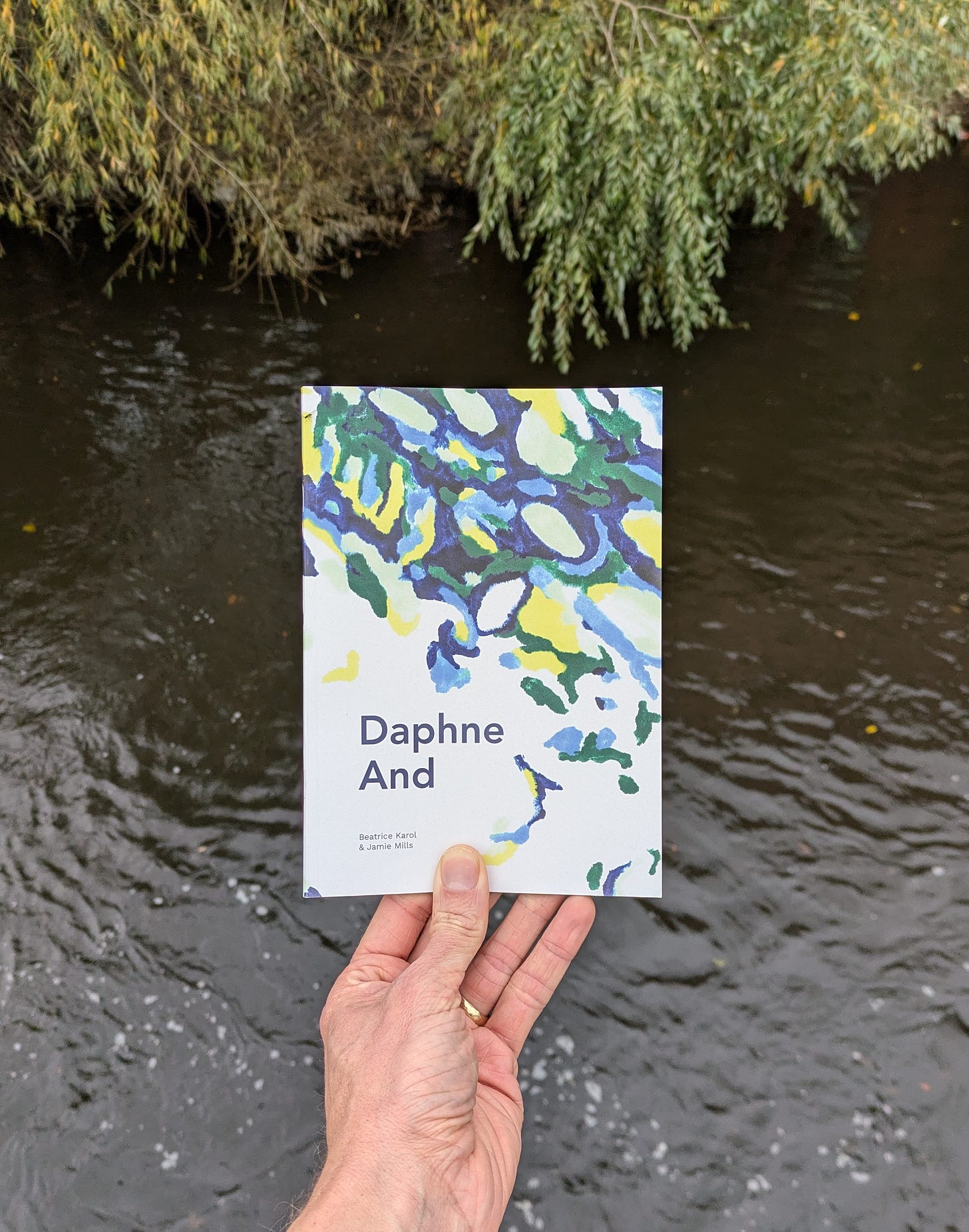In the previous post, I shared some work for a recently completed project, the illustrated long poem, Daphne And. Today, I’d like to share a bit of the background process behind this work, some reference points, some sketches and how the final publication took form.
This post my appear clipped if viewing in your email inbox, so please click through for full post.
Daphne And is a long poem by my good friend and collaborator1, Beatrice Karol. The poem is a retelling of the myth of Daphne and Apollo, exploring belonging through breaking the boundaries of human and more-than human. Frolicking in the current of the Pineiós river, distorting in the shifting streams and tangling in root, rock and mycelia.
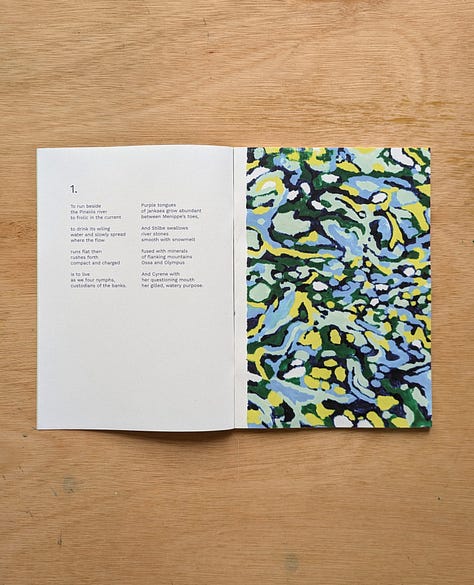
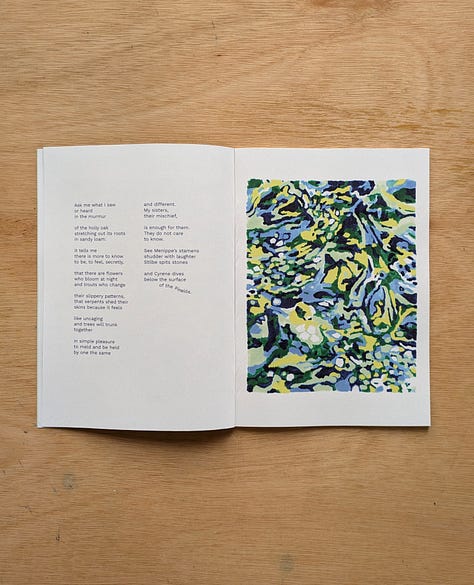
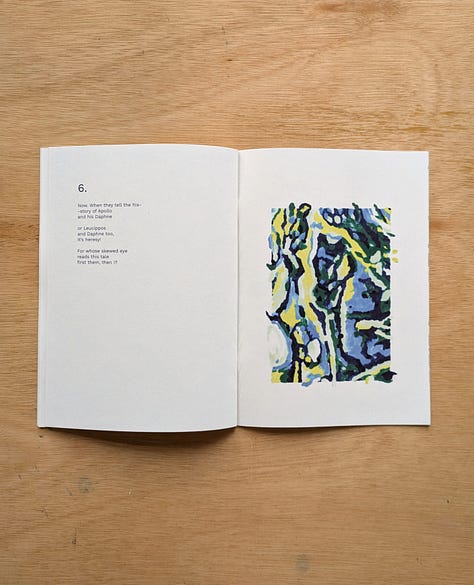
I began my part of the project by loosely exploring some of the themes from the writing. Some words and phrases I scratched out early on in the process included:
Things
stones, water, roots, soil, sand, bark, beetles, snakeskin, mycelia, lichen, flesh, larvae, laurel, cypress, peat…
Themes
boundaries , multitudes, glimpses, fractions, atomised elements, splitting, fusing, shifting, melding, uncaging, tangling, struggle, unfurling…
I also took myself on a little Sheffield river walk, mulling those starters over to see if that sparked anything in particular, or allowing any further reference to emerge. Whilst not exactly the mythical, mediterranean Vale of Tempe, this small sense of connection to the text did really help give space to some of those thoughts, and gave me some specific reference to spend time with. As someone that finds it pretty unfruitful to ‘picture’ things in my mind, the time spent dwelling in an environment that even loosely connects to an illustrative project is always valuable.
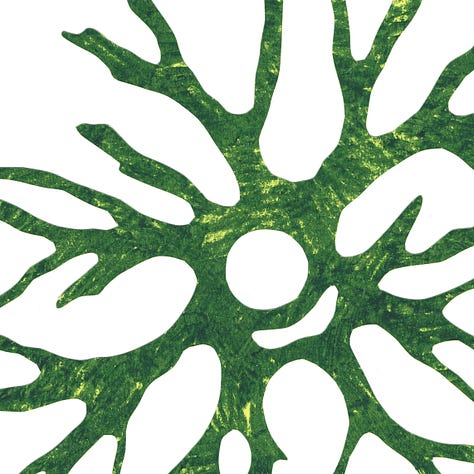


These initial visual thoughts then became a series of more focused oil pastel drawings, specifically focusing on the lichen motif. More specifically than that, a small piece of Ramalina faranacae lichen I’d come across on the walk. The tendrils and outward, knotty growth echoing the flow of the water in the text as well as the ecological lens of the writing as a whole. For a bit more lichen context:
For those not yet initiated into this weird and beautiful world, a lichen should not be thought of as an individual. All lichens are composed of a fungal host (the mycobiont) and one or more photosynthesising partners (the photobionts), either cyano-bacteria or algae. The importance of this is that lichens provide a perfect example of the primacy of symbiosis to the development of life. Evolutionary biology has tended to overemphasise the inheritence of sexual reproduction and in so doing reinforces a fixation on heterosexual partnering. The messy exchange of genetic information through prolonged symbiotic relationships not only represents an alternative pathway for evolution but also disturbs the edges of individual identity.2
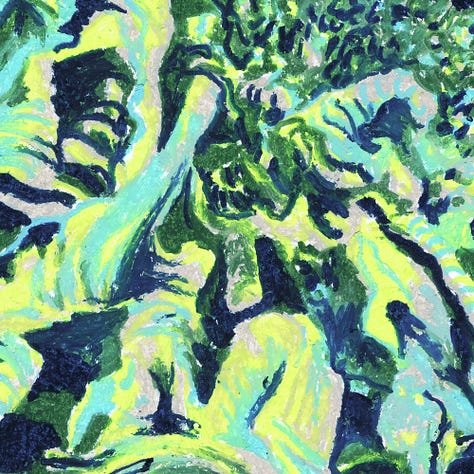
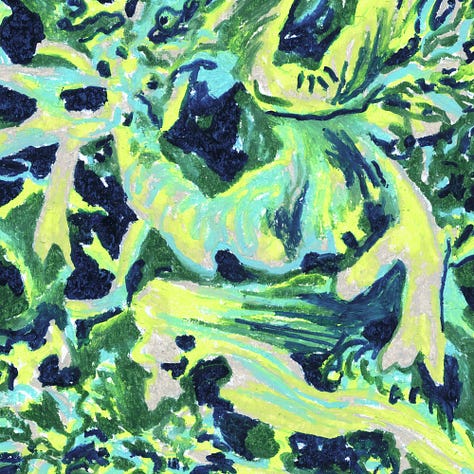
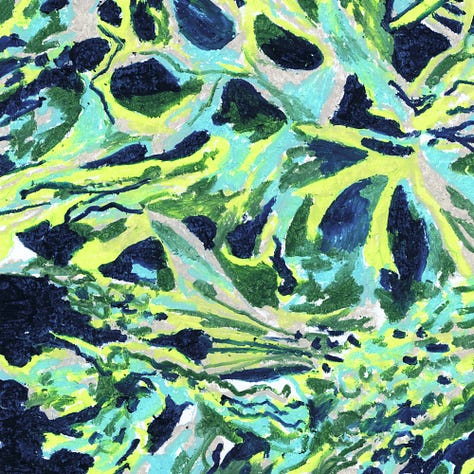
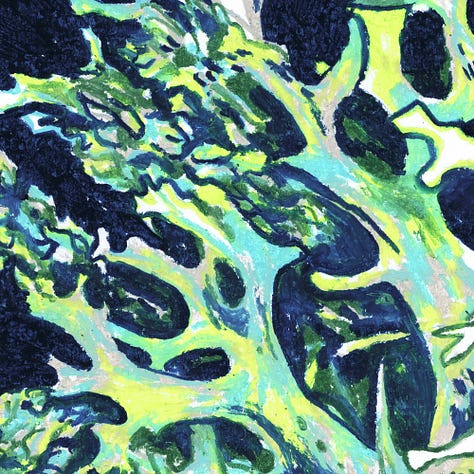
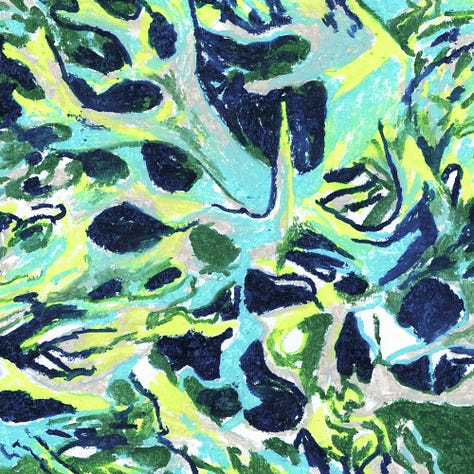
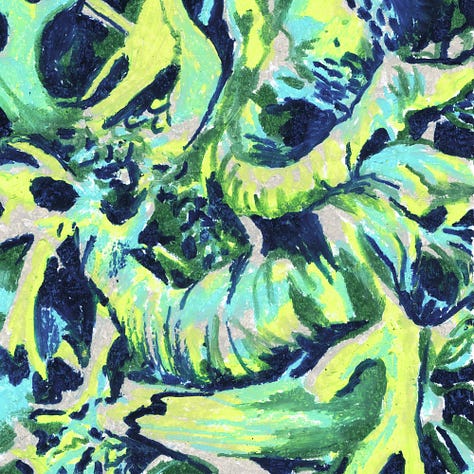
This project was then put to one side for a while, with attention needed elsewhere. On returning to the drawings above with a bit of distance, it felt as if they needed something else to lift them up a touch. They seemed a bit murky, a little hurried, when in fact the writing was much brighter, sunnier and more crisp. The next step was to then reinterpret these drawings as Gelli monoprints. Whilst a bit long-winded, I do like this secondary shift away from the reference and the further abstraction that takes place. I was also able to explore the visual framing, making better connections to moments in the narrative.
And that’s the final book! It’s a relatively small publication (44 pages) but I’m really proud of the relationship between Bea’s fluid, shifting, submerging writing and my images. This is the second project we have worked on together, and hopefully there will be more downstream in the future. If you would like to purchase a copy, you can do so at the link below. Thanks!
A Piece of Turf, available here
Bruce, Snaky Zine #2 On Movement



